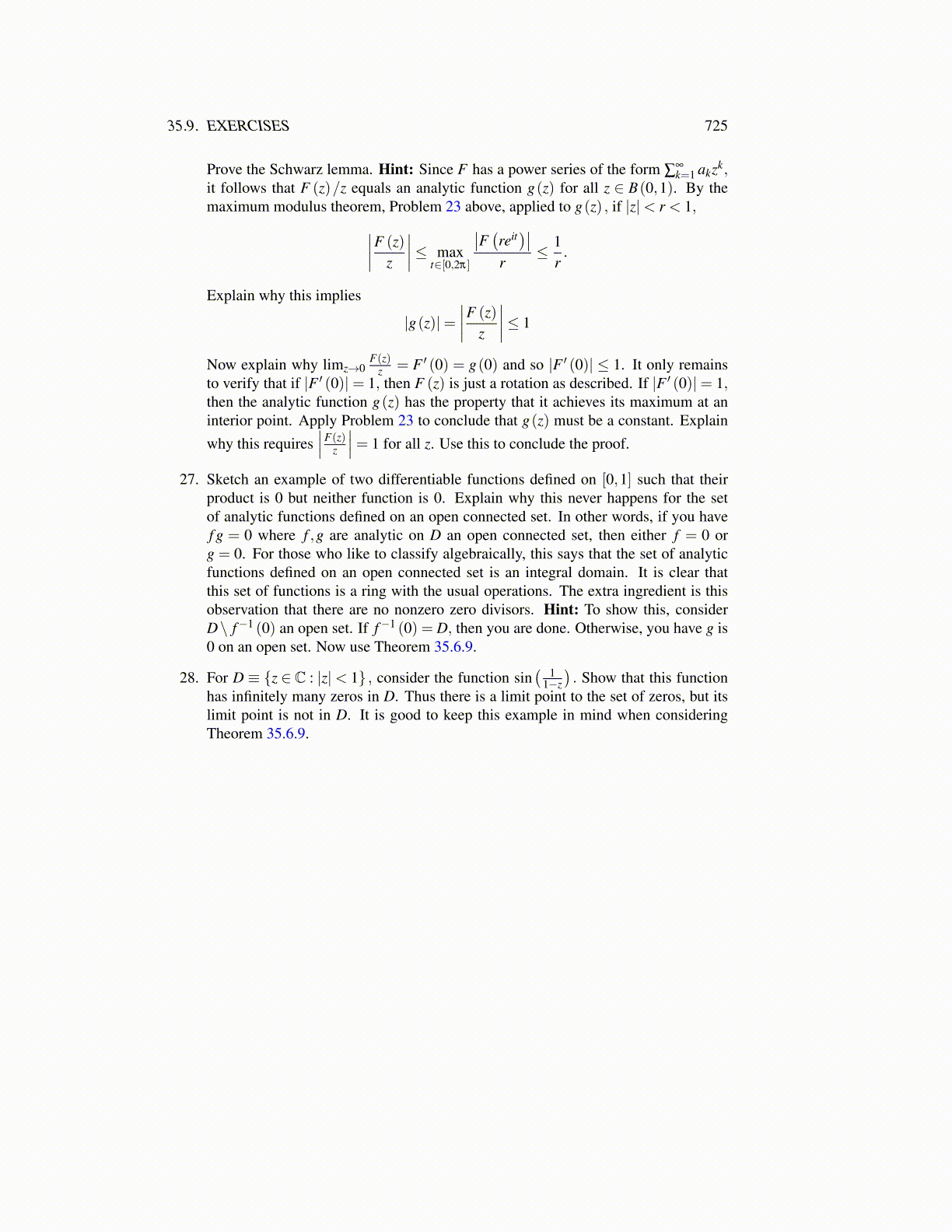
35.9. EXERCISES 725
Prove the Schwarz lemma. Hint: Since F has a power series of the form ∑∞k=1 akzk,
it follows that F (z)/z equals an analytic function g(z) for all z ∈ B(0,1). By themaximum modulus theorem, Problem 23 above, applied to g(z) , if |z|< r < 1,∣∣∣∣F (z)
z
∣∣∣∣≤ maxt∈[0,2π]
∣∣F (reit)∣∣
r≤ 1
r.
Explain why this implies
|g(z)|=∣∣∣∣F (z)
z
∣∣∣∣≤ 1
Now explain why limz→0F(z)
z = F ′ (0) = g(0) and so |F ′ (0)| ≤ 1. It only remainsto verify that if |F ′ (0)|= 1, then F (z) is just a rotation as described. If |F ′ (0)|= 1,then the analytic function g(z) has the property that it achieves its maximum at aninterior point. Apply Problem 23 to conclude that g(z) must be a constant. Explainwhy this requires
∣∣∣F(z)z
∣∣∣= 1 for all z. Use this to conclude the proof.
27. Sketch an example of two differentiable functions defined on [0,1] such that theirproduct is 0 but neither function is 0. Explain why this never happens for the setof analytic functions defined on an open connected set. In other words, if you havef g = 0 where f ,g are analytic on D an open connected set, then either f = 0 org = 0. For those who like to classify algebraically, this says that the set of analyticfunctions defined on an open connected set is an integral domain. It is clear thatthis set of functions is a ring with the usual operations. The extra ingredient is thisobservation that there are no nonzero zero divisors. Hint: To show this, considerD\ f−1 (0) an open set. If f−1 (0) = D, then you are done. Otherwise, you have g is0 on an open set. Now use Theorem 35.6.9.
28. For D ≡ {z ∈ C : |z|< 1} , consider the function sin( 1
1−z
). Show that this function
has infinitely many zeros in D. Thus there is a limit point to the set of zeros, but itslimit point is not in D. It is good to keep this example in mind when consideringTheorem 35.6.9.